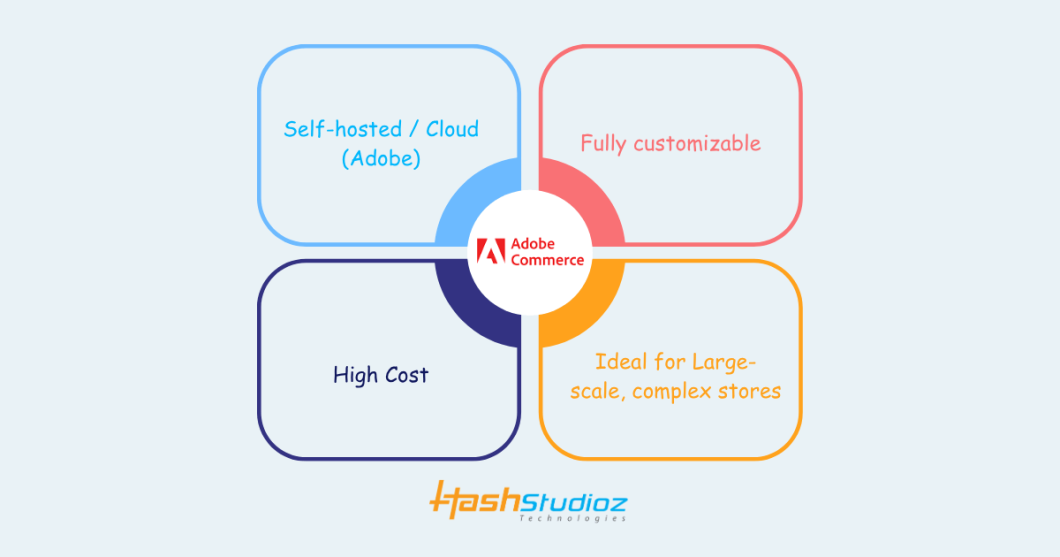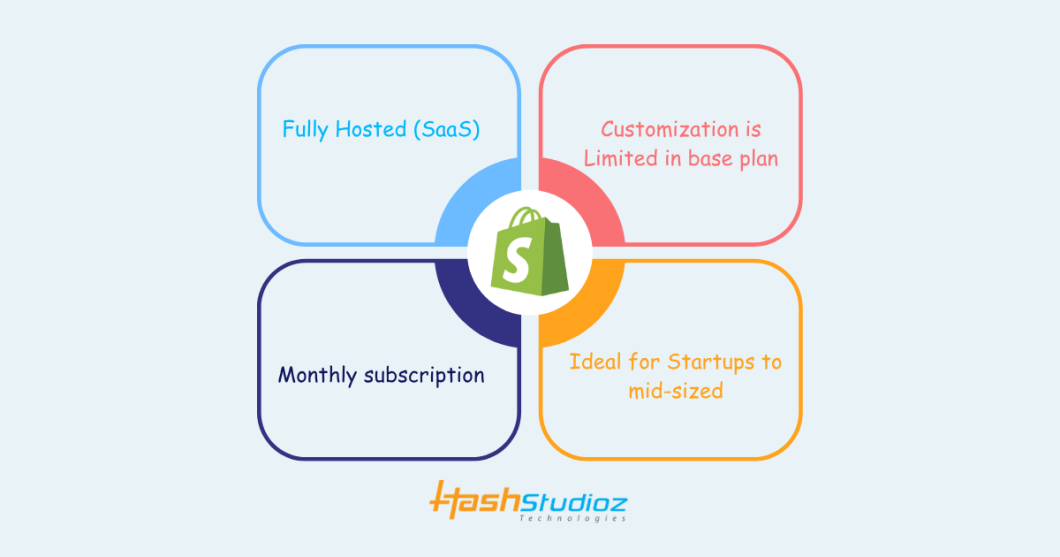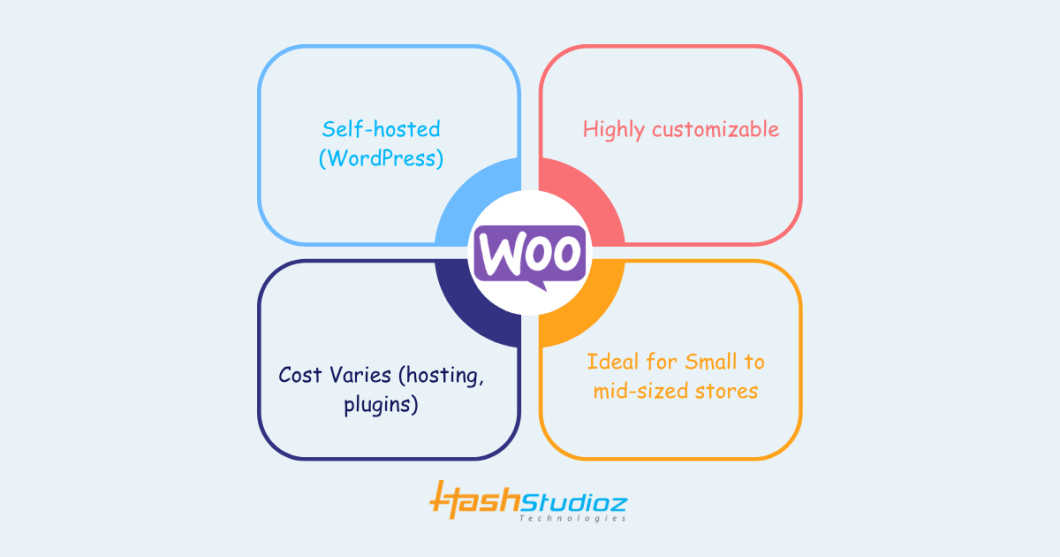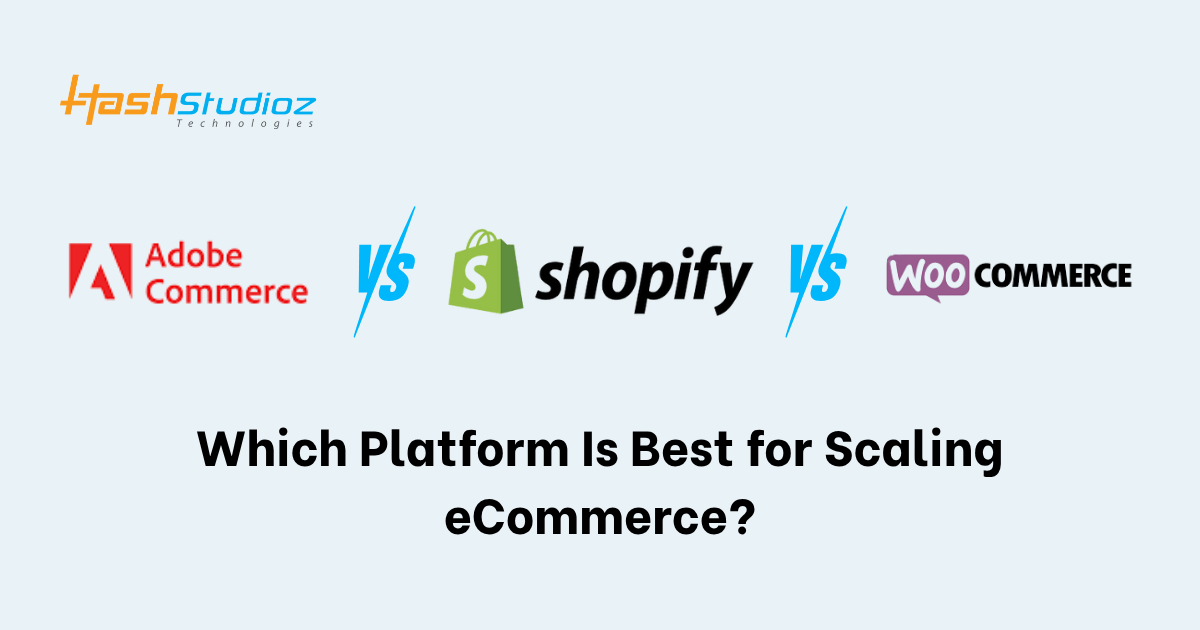eCommerce is not just about having a website with a few products and a checkout button. In 2025, it’s about personalized experiences, AI-driven recommendations, mobile-first design, and most importantly, scalability.
If you’re running an online store and planning to scale, whether that means more traffic, more sales, more products, or more integrations, choosing the right platform is a decision that could define your business’s growth curve.
Today, we’re comparing Adobe Commerce (formerly Magento), Shopify, and WooCommerce, the three major players in the eCommerce arena. Let’s break them down.
Table of Contents
- 1. Adobe Commerce (Magento): Powerhouse for the Ambitious
- 2. Shopify: The Scalable Simplicity
- 3. WooCommerce: The Flexible Underdog
- Quick Comparison Snapshot
- Which Platform Wins for Your Scaling Needs?
- 2025 and Beyond: The Future of eCommerce Platforms
- Final Verdict: It’s Not About the Tool, It’s About the Fit
- TL;DR Recap
- Ready to Scale? Start With the Right Foundation
1. Adobe Commerce (Magento): Powerhouse for the Ambitious
What is Adobe Commerce?
Formerly known as Magento, Adobe acquired this powerful platform and positioned it for enterprise-level eCommerce. It’s open-source at its core (Magento Open Source), but Adobe Commerce is the cloud-hosted, full-featured, and premium version.
Why it’s great for scaling:
- Enterprise features out of the box: multilingual support, multi-store architecture, B2B modules, advanced product types, etc.
- Robust customization: Need to connect your ERP or build a complex product configurator? Magento can do it.
- Built to handle load: Adobe Commerce is designed to scale with traffic spikes, large catalogs, and high sales volume.
Drawbacks:
- Steep learning curve: Not beginner-friendly.
- Costly: Adobe Commerce pricing can start from $22,000/year for licensing alone.
- Requires developer support: Not plug-and-play like Shopify.

Best For: Enterprises, global brands, or businesses with complex catalogs and advanced customization needs.
2. Shopify: The Scalable Simplicity
What is Shopify?
Shopify is a cloud-based eCommerce platform that powers over 4.8 million stores globally. Its plug-and-play nature, stunning themes, and powerful app ecosystem make it a favorite for both beginners and growing brands.
Why it’s great for scaling:
- Shopify Plus: Designed for scaling businesses, it can handle thousands of transactions per minute, has customizable checkout, and priority support.
- Built-in tools for SEO, email marketing, analytics, and even AI-based product recommendations.
- Extensive third-party apps and integrations: Payment, shipping, loyalty, marketing—you name it.
- Automatic updates, security, and hosting: One less thing to worry about as you grow.
Drawbacks:
- Limited customization unless you use Shopify Plus.
- Transaction fees if not using Shopify Payments.
- App costs can add up quickly.
Fun Stat: Shopify stores saw an average revenue growth of 126% YoY in 2023 (Shopify Data).

Best For: D2C brands, scaling startups, dropshipping businesses, and anyone who wants growth with ease of management.
3. WooCommerce: The Flexible Underdog
What is WooCommerce?
WooCommerce is a free, open-source plugin for WordPress that transforms your blog or site into a fully functional eCommerce store. It’s currently powering 23% of all eCommerce websites.
Why it’s good for scaling:
- Highly customizable: Because it’s open-source, you can tweak virtually anything.
- Huge plugin ecosystem: From memberships to subscriptions to multilingual support.
- Developer-friendly: You control the code, the server, the experience.
- Strong for content-first commerce, especially if you’re combining blogging and selling.
Drawbacks:
- Self-hosted: You need to manage your own hosting, security, backups, and speed optimization.
- Scaling can get tricky if not managed well.
- Plugin conflicts are common during scale.
Tip: Pairing WooCommerce with high-end managed WordPress hosting (like Kinsta or WP Engine) significantly improves its scalability.

Best For: Bloggers-turned-sellers, tech-savvy entrepreneurs, niche content stores, and those who want full control.
Quick Comparison Snapshot
| Feature/Platform | Adobe Commerce (Magento) | Shopify | WooCommerce |
| Hosting | Self-hosted / Cloud (Adobe) | Fully Hosted (SaaS) | Self-hosted (WordPress) |
| Ease of Use | Complex | Extremely user-friendly | Moderate (WordPress UI) |
| Scalability | Enterprise-grade | High (especially Plus) | Moderate to High |
| Customization | Fully customizable | Limited in base plan | Highly customizable |
| Cost | High (especially Cloud) | Monthly subscription | Varies (hosting, plugins) |
| Market Share (2024)* | ~1.5% (enterprise-heavy) | ~10.3% (growing fast) | ~23% (largest share) |
| Ideal For | Large-scale, complex stores | Startups to mid-sized | Small to mid-sized stores |
*Data via BuiltWith and Statista, 2024
Which Platform Wins for Your Scaling Needs?
Let’s break it down by scenario:
- You’re a startup turning profitable and want to scale fast without hiring developers → Shopify
- You’re a medium-sized business looking to expand to international markets with multi-store support → Adobe Commerce
- You’re a solo founder with a WordPress site, content strategy, and are gradually scaling → WooCommerce
- You want to scale to 7–8 figures with full control over UX, backend logic, and tech stack → Adobe Commerce or custom WooCommerce
2025 and Beyond: The Future of eCommerce Platforms
In 2025, the key to eCommerce growth is not just selling more; it’s about automation, personalization, AI, and omnichannel commerce. All three platforms are adapting:
- Adobe Commerce is deepening its AI integration with Adobe Sensei, improving personalization and customer segmentation.
- Shopify is focusing on Shopify AI, which auto-generates product descriptions, recommends inventory, and suggests marketing strategies.
WooCommerce is evolving via the WordPress ecosystem’s emphasis on headless commerce and Gutenberg customization.

Final Verdict: It’s Not About the Tool, It’s About the Fit
There’s no absolute winner in the Adobe Commerce vs Shopify vs WooCommerce debate. Each platform can scale, but the way it scales depends on:
- Your budget
- Your team’s technical skills
- Your vision for the business
- The complexity of your catalog and logistics
Pro Tip: Start where you are comfortable, but plan for scale from Day 1. Migrating platforms later can be costly and messy.
TL;DR Recap
| Use Case | Best Platform |
| Startups & D2C Brands | Shopify |
| Enterprise-Level Growth | Adobe Commerce |
| Content-First Stores | WooCommerce |
| Full Control & Custom Features | Adobe Commerce or WooCommerce |
| Fast Setup & Low Maintenance | Shopify |
Ready to Scale? Start With the Right Foundation
Choosing between Adobe Commerce, Shopify, and WooCommerce isn’t just about features; it’s about finding the right fit for your business goals. At HashStudioz Technologies, we help brands navigate this decision with clarity, and scale their eCommerce presence with smart tech, seamless integrations, and future-ready solutions.

